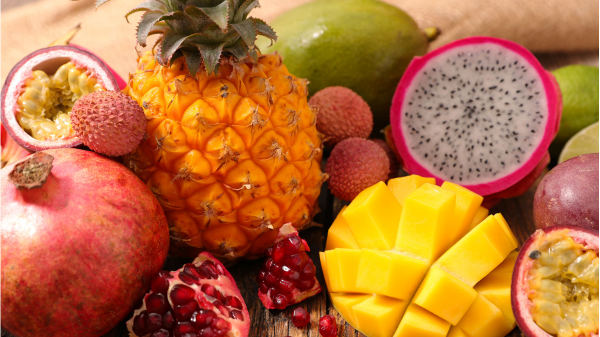World exports of tropical fruits are expected to have dropped 5 percent in 2022, according to a recent report by the Food and Agriculture Organization (FAO) of the United Nations. Major Tropical Fruits – Preliminary results 2022 (fao.org)
The report notes:
“• Global exports of mango, mangosteen and guava are estimated to decline by 5 percent, to 2.1 million tons [metric tons].
• Global pineapple exports are expected to contract by 1.5 percent, to 3.2 million tons.
• Global exports of avocado are expected to fall by 6 percent, to 2.4 million tons.”
By contrast, global papaya exports are expected to have grown by 1 percent, to a modest 370,000 tons.

“World average export unit values of all four major tropical fruits have been displaying an overall strong tendency to increase. Indicative average wholesale prices in the United States of America have been similarly displaying a strong tendency to increase for most major tropical fruits.”
The exception is papayas, “whose average wholesale prices have remained relatively unchanged from the previous year, albeit at a high level,” notes the report.
Particularly striking were the figures for avocados, whose global exports are expected to have declined by 6 percent in 2022, to below 2.4 million metric tons. The major cause was an anticipated 32 percent drop in shipments from Mexico, to around 1 million tons, 380,000 tons below the previous years.
“In 2022, following substantial production losses caused by a destructive storm in June and persisting conditions of drought in major production areas, Mexico’s share in global avocado exports looks likely to fall to some 40 percent,” the report indicates. Exports from other major producing nations—Peru, Chile, Kenya, and South Africa—were expected to have increased modestly.
Mexican papayas showed the opposite effect: a rise in production of some 4 percent, largely because of “production expansion.” Nevertheless, “high costs for airfreight, meanwhile, have been reported as impeding higher growth prospects for papayas.”
The Russian invasion of Ukraine has disrupted tropical fruit markets in those countries. These drops “translated into some 2.4 percent of global tropical fruit shipments that have been facing considerable obstacles to reach their destination market in 2022.”
On the whole, volume decline of produce exports was accompanied by an increase in prices. “Indicative average wholesale prices in the United States of America have been . . . displaying a strong tendency to increase for most major tropical fruits,” says the report.
But price increases were offset by increased costs: “Considerable rise in input prices has simultaneously and significantly raised production costs,” says the report. “Higher costs of transport, alongside the global shortage in refrigerated containers, have exerted additional upward pressure on costs and squeezed margins in the first half of 2022, with some of these pressures seemingly abating during the second half.”
The rise in input costs was affected by the disruption of Russian fertilizer shipments to the major tropical fruit producing nations: Russian fertilizer shipments to Mexico declined 59 percent in the first nine months of 2022.
“Given the perishable nature of tropical fruits in production, trade and distribution, environmental challenges and insufficient infrastructure continue to jeopardize production and supply to international markets,” comments the report on the long-term picture.



